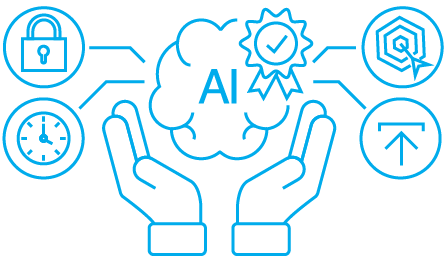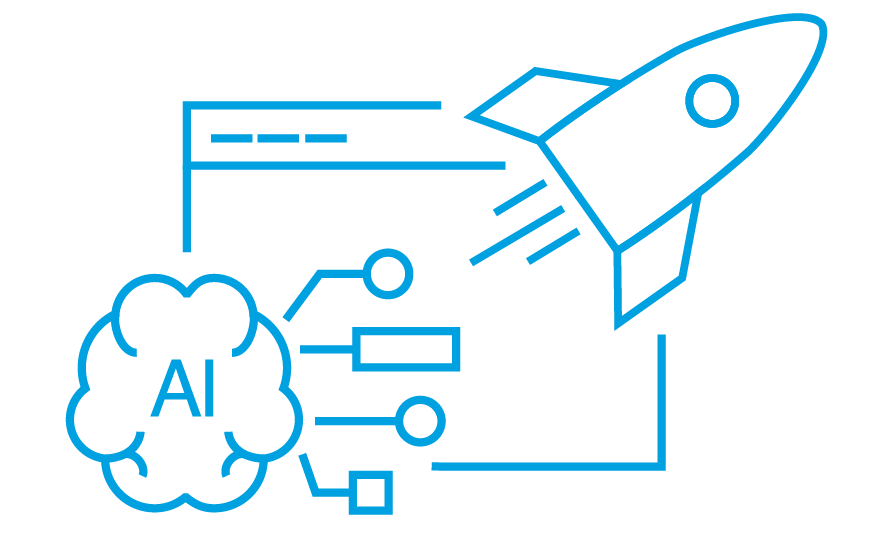- What is a Data Management Platform (DMP)?
- What is a Demand-Side Platfrom (DSP)?
- Where to Purchase Audience Data
- DSP vs DMP: key differences
- How DMPs and DSPs Work Together
- How DMP and DSP Integrate in Programmatic Advertising
- Audience Data: The Link Between DMP and DSP
- Custom Segments and Seamless DSP Integration with OnAudience
- Conclusion
In the ever-evolving landscape of digital advertising, marketers are constantly seeking more efficient ways to connect with their target audiences through personalized and impactful messaging, particularly by leveraging multiple ad exchanges.
At the heart of this quest lie two crucial technologies that have reshaped the way marketing strategies are crafted and executed: Data Management Platforms (DMPs) and Demand Side Platforms (DSPs). These platforms, integral to programmatic advertising, offer data-related services that enable marketers to refine their targeting campaigns and tailor their marketing messages with unprecedented precision. If you’re new to these terms, read our blog to understand what audience data is and how it works.
Although DMPs and DSPs often work together, they serve distinct purposes. This guide explains the differences between them, when to use each, and how audience data connects the two.
What is a Data Management Platform (DMP)?
Data Management Platform is a platform where the data is being collected, analyzed, managed and activated. DMPs store first-party data, second-party data, and third-party data which are processed and integrated. This makes it possible to see a full customer view. Marketers can use this consolidated data to build segments, such as “frequent buyers” or “jazz music enthusiasts.”
Some DMPs integrate with external ad inventories to maximize audience reach. Third-party data enhances targeting by revealing user behavior beyond your website, making it a vital component of ad tech. By aggregating these data types, DMPs enable advertisers to build precise segments based on:
- demographics,
- interests,
- browsing behavior,
- or purchase intent.
What is a Demand-Side Platfrom (DSP)?
Demand Side Platform (to learn more, check out our article: What is a Demand Side Platform (DSP) & How Does It Work?) is a part of the real-time bidding (RTB) mechanism, a foundational technology in programmatic advertising that optimizes ad impressions. DSPs work on behalf of advertisers, marketers or advertising agencies during the real-time auction and aim to buy media for the lowest price. Based on the campaign data, the platform allows making a bid per user with an individual price and choosing the most relevant ad content for him.
Through a demand-side platform, marketers can:
- Define targeting criteria (age, location, interests)
- Set budgets and bidding strategies
- Access inventory across channels (web, mobile, CTV)
- Set frequency capping to avoid overexposure in digital ad space
- Track campaign performance and optimize on the fly
- Integrate third-party data sources or onboard custom segments for advanced targeting across multiple ad exchanges.
DSPs also work closely with Supply-Side Platforms (SSPs), which represent the sell-side of ad inventory.
OnAudience, a leading data provider, is fully integrated with top global DSPs including The Trade Desk and Microsoft Advertising, empowering marketers to easily access and activate audience segments.
Where to Purchase Audience Data
Whether you’re planning to enrich existing customer data or build precision-targeted segments from scratch, the quality of your audience data directly impacts the success of your ad campaigns.
OnAudience delivers transparent, GDPR-compliant third-party audience data. In fact, our segments outperform Nielsen DAR benchmarks by 19 to 48 percentage points. With access to over 3,000 predefined audience segments and 25 billion user profiles, advertisers can:
- Improve ROI through accurate targeting
- License audience segments tailored to their needs
- Activate them directly within DSPs like The Trade Desk
To learn more about buying audience data, check our post: How to buy audience data?
DSP vs DMP: key differences
The primary difference between a DMP and a DSP lies in their functionality. While a DMP focuses on data management, enabling advertisers to gather and analyze audience data, a DSP is designed for the purchasing of ad inventory. Here are some key differences:
- Data Management: DMPs aggregate and organize data, whereas DSPs execute media buying.
- Audience Segmentation: DMPs help create audience segments using first-party and third-party data, while DSPs use these segments to target ads.
- Real-Time Bidding: DSPs participate in real-time bidding for ad impressions, allowing advertisers to buy ad space efficiently.
- Integration: DMPs can integrate with multiple DSPs and supply-side platforms (SSPs) to enhance the programmatic advertising ecosystem.
| Feature | DMP | DSP |
| Role | Collects, segments, and stores user data | Executes programmatic ad campaigns |
| Data Ownership | Marketer-owned data repository | External platform with campaign-level data only |
| Use Case | Segment users by behavior or interest | Buy and serve ads based on audience targeting |
| Necessity | Optional for campaigns, but helpful for insight | Required to run programmatic ad campaigns |
| Interaction | Shares segments with DSP for activation | Uses segments to purchase impressions |
How DMPs and DSPs Work Together
In digital marketing, DMPs and DSPs often work in tandem. By leveraging the audience data from a DMP, a DSP can optimize ad placements and improve the return on ad spend (ROAS). Advertisers can use a DSP to target specific audience segments created in a DMP, ensuring their messages reach the right people across various ad exchanges.
How DMP and DSP Integrate in Programmatic Advertising
In a programmatic ecosystem, DMPs and DSPs integrate with SSPs and ad exchanges to enable seamless, real-time decision-making. When a user visits a webpage, this system evaluates in milliseconds which ad to serve, based on the best match between user profile and advertiser criteria.
Integrated systems altogether provide various options for receiving data from different sources and use collected data to reach your customers intelligently.
A DMP licenses user segments to the DSP, enabling targeted ads to be delivered to users who, for example, visited specific product pages or made previous purchases.
Together, these systems provide:
- Enhanced targeting precision
- Data activation at scale
- Efficient, automated campaign management
Audience Data: The Link Between DMP and DSP
High-quality audience data is the currency of digital advertising. It’s the bridge that connects audience planning (traditionally done in DMPs) with campaign execution (via DSPs). Reliable audience data enables:
- Accurate audience targeting
- Reduced ad waste
- Improved campaign performance metrics
- Cross-channel engagement consistency
- Scalable personalization in ad creatives
OnAudience offers over 3,000 predefined audience segments on the major global DSP platforms.
Custom Segments and Seamless DSP Integration with OnAudience
OnAudience empowers marketers to enrich their first-party data and create custom audience segments tailored to specific campaign goals. These segments can be activated across the DSP of your choice, supporting seamless, scalable integration into your programmatic strategy.
What’s more, OnAudience offers an AI-powered audience creation tool, which helps advertisers find the right target audiences. With just pasting a brief, you can:
- Leverage our vast database of behavioral, demographic, and intent signals
- Generate ultra-precise audience segments using LLMs (Large Language Models)
- Instantly activate them across major DSPs
Conclusion
Understanding the differences between DMPs and DSPs is essential for marketers looking to enhance their digital advertising campaigns. By effectively utilizing both platforms, advertisers can optimize their strategies, improve audience targeting, and ultimately drive better results in their digital marketing efforts. Whether you’re a publisher looking to sell ad inventory or an advertiser aiming to buy ad space, knowing how to leverage DMPs and DSPs is critical in today’s digital landscape.
You can choose from hundreds of segments, such as “Music Lovers,” “Automotive Enthusiasts,” or “Nike Fans.” These segments can then be exported to activation platforms like DSPs.
DMPs are particularly useful for unifying fragmented datasets, which is essential in today’s multichannel environment where consumers interact across numerous touchpoints.
Last update August 2025



